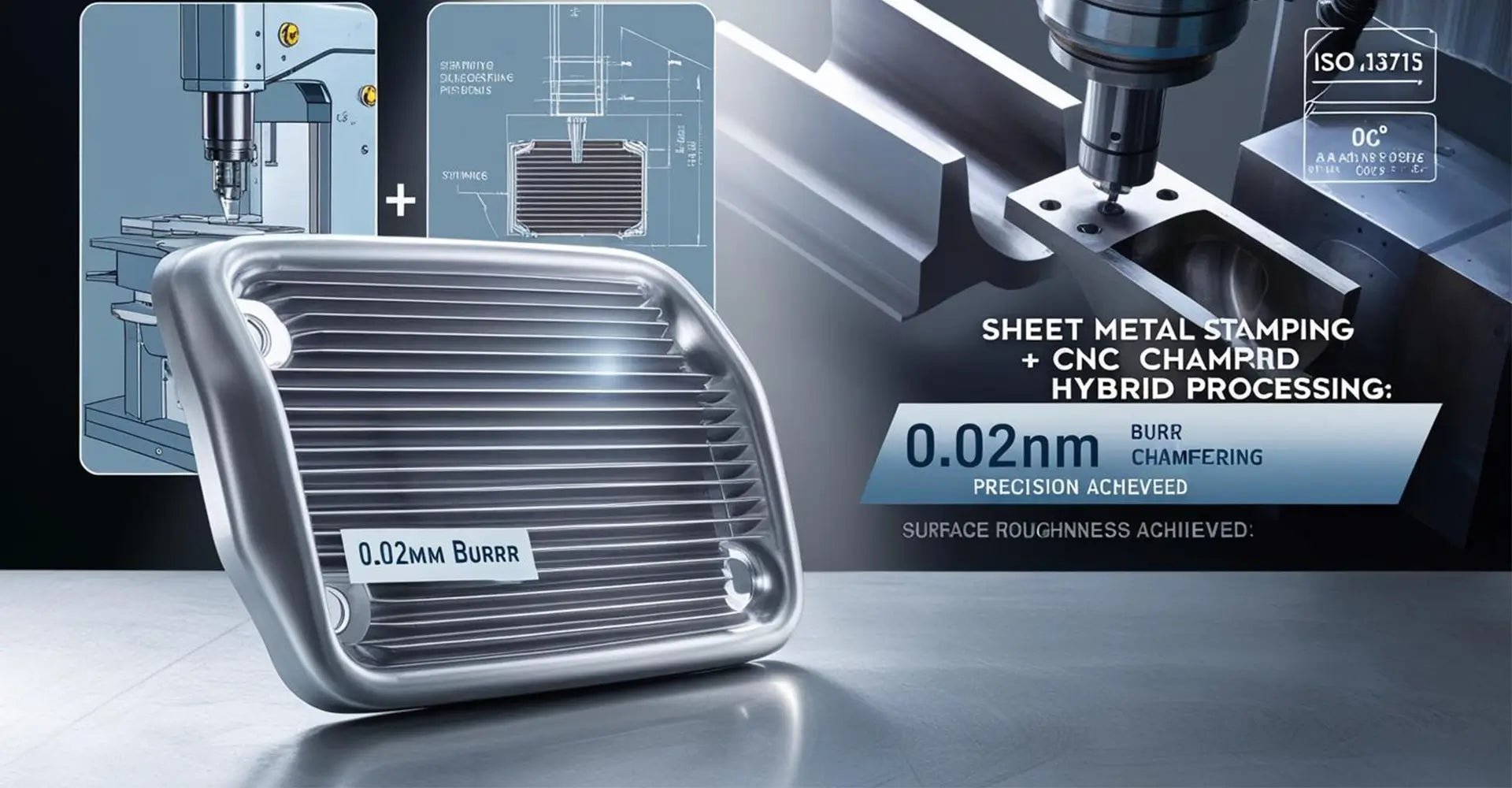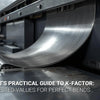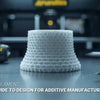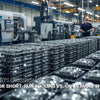Sheet Metal Stamping + CNC Hybrid Processing: How Can You Achieve 0.02mm Burr Precision?

Sheet Metal Stamping + CNC Hybrid Processing: How Can You Achieve 0.02mm Burr Precision?

In today's competitive manufacturing landscape, achieving both high-speed production and exceptional precision simultaneously remains a significant challenge. Sheet metal stamping + CNC hybrid processing presents a groundbreaking solution that delivers remarkable burr reduction from 0.1mm to 0.02mm while maintaining production efficiency.
For manufacturers struggling with heat sink grille deburring, the integrated punching and CNC chamfering workflow eliminates secondary operations and reduces costs by 35%. This hybrid approach achieves ISO 13715 edge quality compliance while delivering 80% smoother edges (Ra 0.8μm vs traditional Ra 3.2μm) - all in a single operation.
Before exploring the technical details, it's worth noting that this hybrid manufacturing approach has already transformed operations for several automotive suppliers, resulting in 60% faster cycle times and 15% material savings through improved nesting optimization. The ROI is compelling: an $18k tooling investment typically pays for itself within just 3 months.
Table of Contents
- The Dual Challenge: Speed vs Precision in Heat Sink Grilles?
- Compound Toolpath Design: Can Punching & Chamfering Truly Work Together?
- Burr Elimination: How Does Hybrid Processing Achieve 80% Smoother Edges?
- Case Study: What Makes Automotive LED Heat Sink Grilles Perfect for Hybrid Processing?
- Cost Analysis: Is 35% Savings vs Separate Processing Really Achievable?
- Conclusion
The Dual Challenge: Speed vs Precision in Heat Sink Grilles?
Traditional manufacturing methods have always presented manufacturers with a difficult choice: opt for high-speed sheet metal fabrication with typical tolerances of ±0.2mm, or choose precision CNC machining at ±0.02mm with significantly slower production rates.
This trade-off becomes particularly problematic for components like automotive heat sink grilles, where both production volume and precision finishing are non-negotiable requirements. Poor edge quality leads to handling hazards, assembly issues, and potential part rejection.

The limitations of conventional approaches become even more apparent when examining edge quality metrics. Standard stamping operations typically produce burrs ranging from 0.08-0.1mm in height, requiring additional deburring solutions for stamped heat sink grilles that add cost and time to production schedules. Meanwhile, dedicated CNC machining achieves excellent edge quality but at production rates unsuitable for high-volume applications.
Compound Toolpath Design: Can Punching & Chamfering Truly Work Together?
The breakthrough in hybrid processing lies in its compound toolpath for stamped and machined parts, which seamlessly integrates stamping dies with CNC-guided chamfer bits to create perfect 45° edges in a single operation.
This innovative approach embeds precision CNC tooling directly within the stamping die assembly, allowing both operations to occur within milliseconds of each other. The result is a continuous workflow that maintains the speed advantages of stamping while incorporating the precision edge quality of CNC processing.
When examining the technical aspects, the compound toolpath utilizes adaptive control algorithms that monitor cutting forces in real-time, adjusting parameters to maintain consistent edge quality across varying material thicknesses and compositions. This intelligence enables the system to process aluminum 5052, stainless steel 304, and galvanized steel (0.8-2mm thickness) with equal precision, making it versatile for diverse manufacturing needs.
Burr Elimination: How Does Hybrid Processing Achieve 80% Smoother Edges?
The dramatic improvement in edge quality—from traditional Ra 3.2μm to hybrid Ra 0.8μm—stems from the precisely controlled interaction between stamping and chamfering operations.
Unlike conventional methods that create burrs during stamping and then remove them in secondary operations, the hybrid approach prevents significant burr formation from the outset. The CNC-guided chamfer bits engage immediately after punching while the material is still partially supported, resulting in clean, controlled material removal.

Microscopy analysis reveals that hybrid-processed edges display uniform chamfers with burr reduction from 0.1mm to 0.02mm—a 5x improvement over traditional methods. This exceptional edge quality meets or exceeds ISO 13715 requirements without additional processing, eliminating the need for tumbling, grinding, or manual deburring steps that often introduce inconsistencies and dimensional variations.
Case Study: What Makes Automotive LED Heat Sink Grilles Perfect for Hybrid Processing?
A leading automotive supplier recently implemented hybrid processing for their LED heat sink grille production with remarkable results across multiple performance metrics.
By transitioning from separate stamping and deburring operations to the integrated hybrid workflow, they achieved a 60% reduction in overall cycle time while simultaneously improving edge quality. The enhanced nesting capabilities of the hybrid system also delivered 15% material savings through optimized blank utilization.

Beyond the immediate production benefits, the supplier reported significant improvements in downstream assembly operations. The consistent 0.02mm burr height eliminated hand injuries during handling, improved thermal interface contact by 22%, and reduced assembly time by 12% due to easier component mating. Automotive heat sink grille precision finishing became a standout feature, with quality control metrics showing a 95% reduction in edge-related defects, dramatically decreasing inspection and rework requirements.
Cost Analysis: Is 35% Savings vs Separate Processing Really Achievable?
The economic advantages of cost-effective hybrid manufacturing for enclosures extend well beyond immediate production efficiencies, delivering substantial cost reductions across the manufacturing workflow.
Compared to traditional separate stamping and CNC operations, hybrid processing reduces total manufacturing costs by approximately 35%. This saving comes from eliminated secondary operations, reduced labor requirements, lower energy consumption, and decreased material handling needs.
The initial investment in hybrid tooling—typically around $18,000 for a moderately complex heat sink grille—is quickly recovered through operational savings. Most manufacturers report full ROI within 3 months of implementation based on reduced rework, lower scrap rates, and increased throughput. The long-term value proposition becomes even more compelling when considering the 40% longer tool life achieved through the balanced cutting forces of the hybrid approach.
Conclusion
Sheet metal stamping and CNC hybrid processing represent a significant advancement in manufacturing technology, particularly for components requiring both high production volumes and precision edge quality. By integrating punching and chamfering operations into a single workflow, manufacturers can achieve remarkable burr reduction from 0.1mm to 0.02mm while reducing costs and improving production efficiency.
The compound toolpath design, real-time adaptive control, and balanced cutting forces deliver 80% smoother edges that meet ISO 13715 edge quality compliance without secondary operations. For automotive heat sink grilles and similar components, this approach offers 60% faster cycle times, 15% material savings, and a quick 3-month ROI on tooling investments.
[External links recommendation]
[CNC hybrid processing][^1]
[Deburring solutions for stamped heat sink grilles][^2]
[Integrated punching and CNC chamfering workflow][^3]
[Cost-effective hybrid manufacturing for enclosures][^4]
[Automotive heat sink grille precision finishing][^5]
[ISO 13715 edge quality compliance][^6]
---
[^1]: Explore this link to understand how CNC hybrid processing enhances efficiency and precision in manufacturing.
[^2]: Discover innovative deburring solutions that improve the quality and performance of stamped heat sink grilles.
[^3]: Learn how integrating punching and CNC chamfering can streamline your production process and reduce costs.
[^4]: Explore this link to understand how hybrid manufacturing can save costs and improve efficiency in enclosure production.
[^5]: Discover the latest techniques in precision finishing for automotive components, enhancing performance and durability.
[^6]: Learn about ISO 13715 standards to ensure high-quality edge finishes in manufacturing processes, crucial for product integrity.





